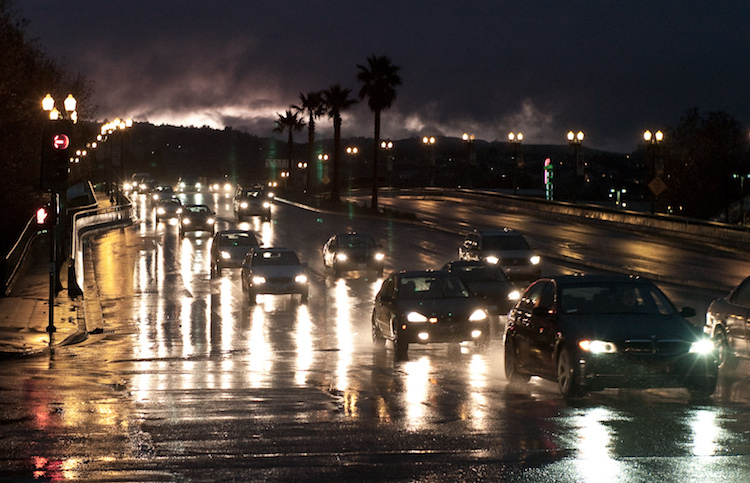Seems like March came in like a lion but didn’t come close to going out like a lamb. Wet weather driving conditions can be treacherous this time of year. From poor visibility to water-filled potholes, one wrong turn can leave even the most experienced driver in complete panic mode. Each year, wet pavement is a contributing factor to over 1.2 million car crashes. That’s insanity!

Here at Metromile, we want you to be safe every time you get behind the wheel. Driving on wet pavement can be tricky, but with these tips you’ll be on your way to safer travels this Spring!
Before You Leave Your Driveway
Driving safety starts before you put the car in Drive. Do I sound like your Mom? Good. Your goal this Spring should be to A) See and B) Be seen. Make sure your windshield wipers are in good condition (sometimes old, dull wipers can leave film or streaks on the glass), and all of your external lights (headlights, tail lights, blinkers, etc.) are working properly. Always turn your headlights on while driving in the rain – it’s even a law in some states. Check that you still have a good amount of tread left on your tires by implementing the Lincoln Test. Use a tire pressure gauge to test the pressure of your tires, and inflate if necessary.
On the Road
- Skip cruise control. On a dry day, cruise control is a perfectly safe and lovely thing to use. On wet and rainy days, the chances of losing control of the vehicle are greater. In order to avoid losing traction, the driver may need to reduce speed by lifting off the gas pedal. This cannot be accomplished when using cruise control, which may cause the vehicle to go into a skid. Skip the cruise control when it’s raining to maintain better control of the car.
- Leave plenty of room. When visibility is low, it is especially difficult to see how the drivers in front of you are behaving. By leaving plenty of room between you and the vehicle in front of you, you’re reducing your chances of crashing into them if you suddenly lose traction.
- Respond to hydroplaning. If your tires are worn and the tread depth is below 2 millimeters, you may experience hydroplaning, especially at higher speeds or in deep water. With even as little as 1.5 inches of water on the road, your tires have to displace 1 gallon of water per second in order to maintain contact with the pavement. If you feel you have suddenly lost traction and the vehicle has started to hydroplane, do not immediately panic and slam on the brakes. Doing this will disrupt the balance of the car and make things much worse. Instead, continue to steer in the direction you need to the vehicle to go. Gently let your foot off the accelerator to slow the car down naturally, without use of the brakes. If you do need to brake, do so lightly in a tapping or pumping motion (only do this if your car does not have anti-lock brakes).
To be honest: the biggest factor when driving in wet-weather is you and your judgment. If visibility drops and the roads suddenly become flooded, only you will know if it is time to pull off and wait it out. Sure, it may take you a bit longer to reach your destination, but in the end, the few minutes spent to be safe will always be worth it. Grab a quick free quote with Metromile and be safe out there this rainy season!
Julianne Cronin is a Bay Area freelance writer, content creator, and founder/editor of the women’s lifestyle site, The Wink.





